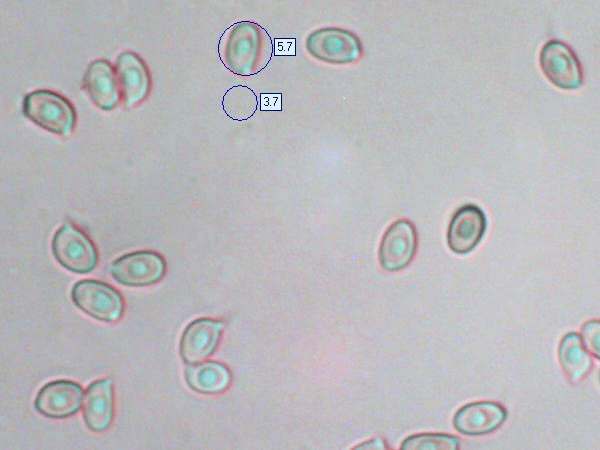Agaricus moelleri Wasser - Inky Mushroom
Phylum: Basidiomycota - Class: Agaricomycetes - Order: Agaricales - Family: Agaricaceae
Distribution - Taxonomic History - Etymology - Toxicity - Identification - Reference Sources
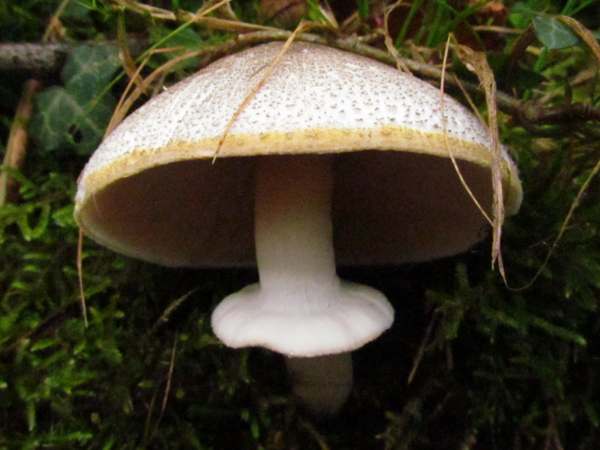
Agaricus moelleri is one of Britain and Ireland's most common and widespread 'true mushrooms' (a term that many mycologists apply to Agaricus species). It is often seen on roadside verges, and is far more common than the Yellow Stainer.
Distribution
Agaricus moelleri occurs throughout Britain and Ireland and can also be found in other mainland European countries from northern Scandinavia right down to the Mediterranean region.
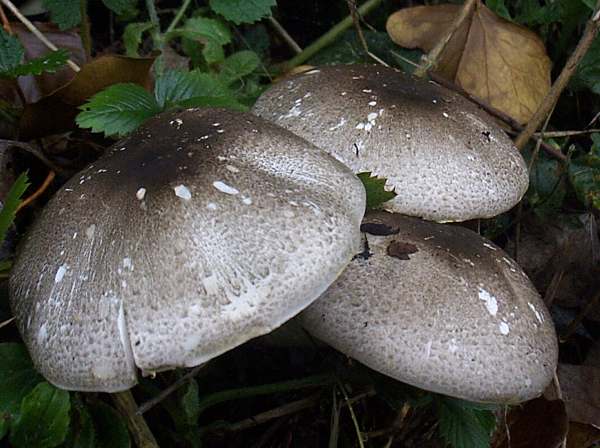
This mushroom is also reported to occur in North America, but it is unclear whether the American and European forms are truly cospecific.
Taxonomic history
Until relatively recently this mushroom was treated by many mycologists as merely a variety of the Yellow Stainer Agaricus xanthodermus. Its currently-accepted scientific name Agaricus moelleri dates from a 1976 publication by the Ukrainian mycologist Dr. Solomon P. Wasser (b. 1946).
Synonyms of Agaricus moelleri include Psalliota xanthoderma var. obscurata (Maire) A. Pearson, Agaricus xanthodermus var. obscuratus Maire, Psalliota meleagris Jul. Schäff., Agaricus meleagris (Jul. Schäff.) Imbach, Agaricus praeclaresquamosus A.E. Freeman, and Agaricus praeclaresquamosus var. terricolor (F.H. Møller) Bon & Cappelli.
Etymology
The specific epithet moelleri honours the German mycologist and forest botanist Alfred Möller (1860 - 1921), while the common English name Inky Mushroom is a reference to the smell of the cut or crushed flesh of this very common but often misidentified mushroom.
Toxicity
When eaten, even after thorough cooking, the Inky Mushroom can cause stomach upsets; however, it seems some people can eat these fungi with no obvious ill effects whatsoever. Our advice is at the very least to play safe and to treat this mushroom with caution, as it is a close relative of the poisonous Yellow Stainer. We do not eat Agaricus moelleri.
Identification guide
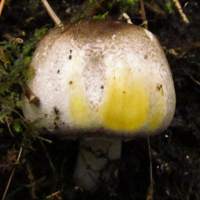 |
CapInitially globose, the cap of Agaricus moelleri expands to become broadly convex and eventually flattens without an in-rolled margin. Caps grow to between 3 and 10cm diameter at maturity. The cap flesh is creamy white and the upper surface has a whitish background covered in grey-brown scales, densest and darkest towards the centre. When bruised, the cap surface turns yellow, most noticeably towards the margin. |
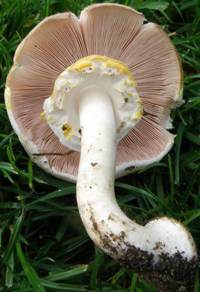 |
GillsPale pink when young, the crowded free gills soon turn deeper pink and later become brown as the fruitbody reaches maturity. StemThe stem diameter is 1 to 2cm with a smooth, silky surface and a bulbous base. A large white pendulous stem ring persists through to maturity; it turns raopidly bright yelloe when bruised. When cut the stem flesh turns from white to yellow, most markedly at the stem base, but then gradually the yellow areas turn brown. |
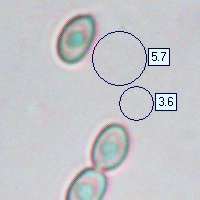 |
SporesEllipsoidal, smooth, 4.5-6.5 x 3.5-4µm. Spore printBrown. |
Odour/taste |
The Inky Mushroom gives off an unpleasant smell (it is indeed ink-like, for those who remember fountain-pen ink, or somewhat similar to carbolic soap - again for the same age group!) most noticeably when the flesh is bruised or cut. The taste of this mushroom is not distinctive, but do remember that Agaricus moelleri is poisonous to many people. |
Habitat & Ecological role |
Inky Mushrooms are saprobic. These poisonous (at least to a significant proportion of people) fungi are most commonly seen in deciduous woodlands and under hedgerows; they occur either singly or in small groups. |
Season |
Early July to early November in Britain and Ireland. |
Similar species |
Agaricus xanthodermus, the Yellow Stainer, is superficially similar to Agaricus moelleri but it lacks the dark scales in the cap centre; it has larger spores. Agaricus campestris is similar in appearance but does not turn yellow when cut or bruised. |
Reference Sources
Fascinated by Fungi, 2nd Edition, Pat O'Reilly 2016, reprinted by Coch-y-bonddu Books in 2022.
BMS List of English Names for Fungi
The genus Agaricus in Britain, 3rd Edition, self-published, Geoffrey Kibby 2011
Funga Nordica: 2nd edition 2012. Edited by Knudsen, H. & Vesterholt, J. ISBN 9788798396130
E. Jahn (1923). "Alfred Möller", Berichte der Deutschen Botanische Gesellschaft, 41: (75)-(83).
Dictionary of the Fungi; Paul M. Kirk, Paul F. Cannon, David W. Minter and J. A. Stalpers; CABI, 2008
Taxonomic history and synonym information on these pages is drawn from many sources but in particular from the British Mycological Society's GB Checklist of Fungi.
Fascinated by Fungi. Back by popular demand, Pat O'Reilly's best-selling 450-page hardback book is available now. The latest second edition was republished with a sparkling new cover design in September 2022 by Coch-y-Bonddu Books. Full details and copies are available from the publisher's online bookshop...
